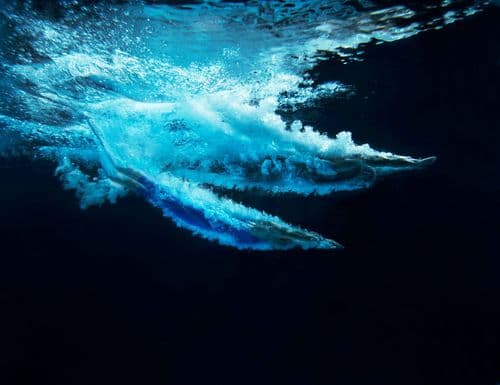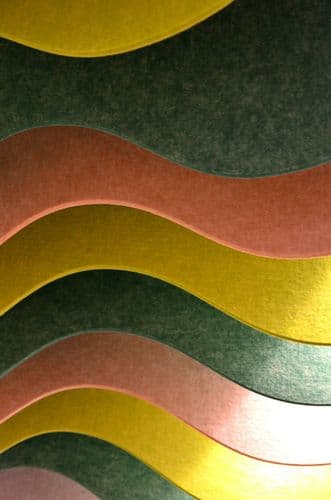How do you choose the reclaimed matter and found objects that you incorporate into your ceramic vessels?
My process is based a lot on the experience of scavenging and discovering. I often find myself exploring my surrounding environment (from the city where I reside to the studio where I am working) looking for materials that are no longer of use but still hold traces of their past use. I believe these traces can become powerful starting points for the process of making.
For instance, my project “An archaeology of the studio” was initiated when by chance I encountered the glaze leftovers of the ceramic studio of my school. Looking like rocks built up over multiple months of studio work they seemed to act like an archival mechanism recording the function of the studio. Collecting them was a way for me to observe closely and trace the history they maintain.
I think in a similar way I worked for the creation of a series of vessels made from reclaimed materials from demolished buildings in the city of Ghent. Architecture is a field that has affected me in many ways, but in this case, this work is an effort to refer back to the materiality of a pre-existing structure, using bricks, concrete and tiles as an alternative source of ceramic supply.
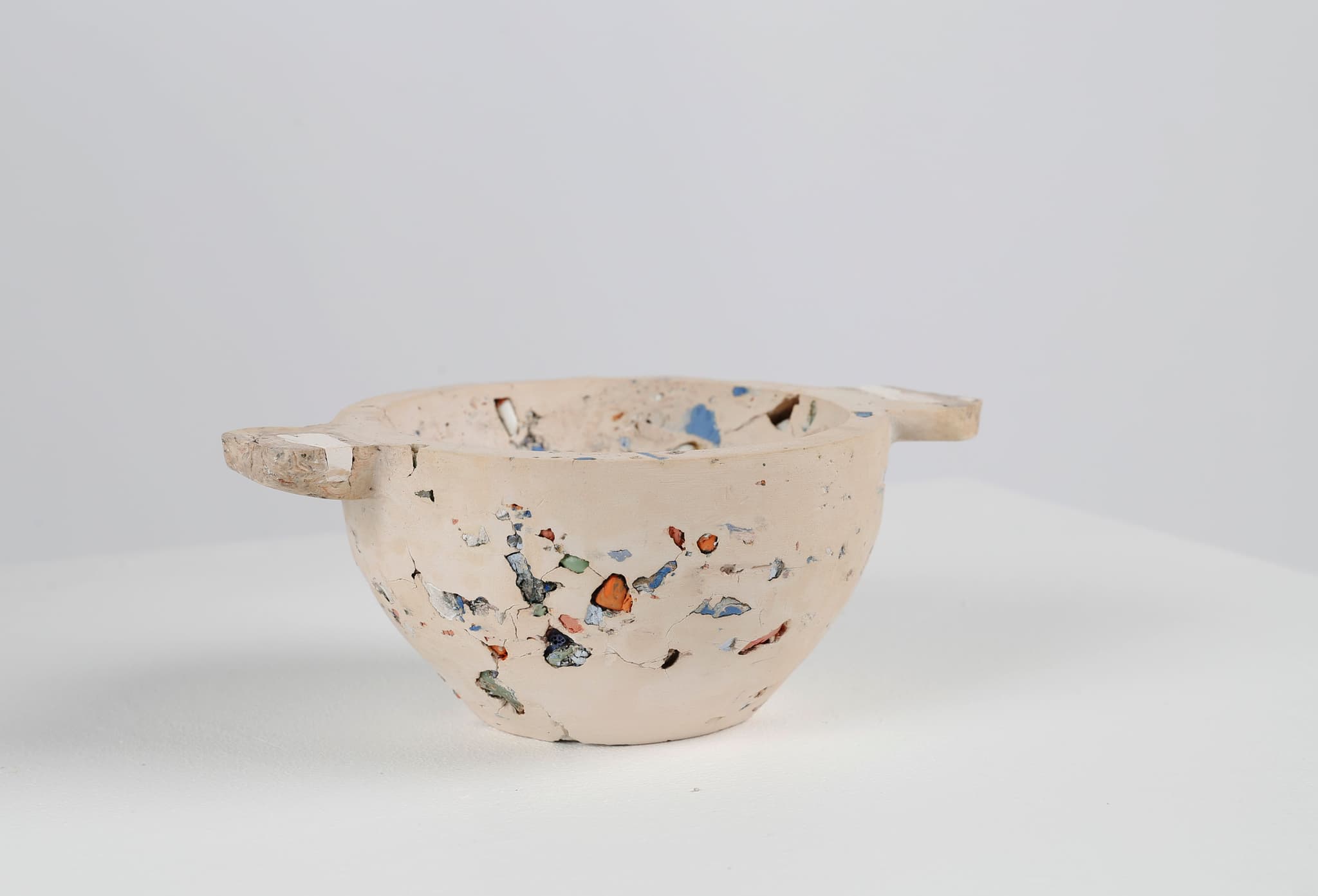
Can you explain the significance of transforming studio detritus into artistic objects in your work?
I need to connect with the materials I am working with and form an open dialogue with my resources. Working from a leftover aspect is very intriguing to me as salvaged materials which at first glance have completed their initial life cycle retain a certain memory. I am generally drawn to the notion of a bricoleur—a maker who uses whatever is at hand, engaging in a dialogue with the materials, interacting with them, shaping them, and allowing them to shape him.
Reusing materials that hold ideas and traces from the past can be seen as a circular practice that rejuvenates old fragments and enriches our understanding of history.
The notion of Spolia, a term from archaeology, refers to fragments of previous building cultures that have been repurposed in new structures. When constructing something new, utilising available, unused, damaged, or unwanted older structures such as quarries makes sense, as it avoids the need to source, cut, and transport new materials.
In this case, I contemplated an expanded and adaptable definition of Spolia to include the ceramic studio, the closest local resource for clay workers. This approach endeavours to instil a sense of circularity within the studio itself. Leftover glaze materials, often infused with glassy components, introduce complexities into the recycling process, contributing to various forms of pollution.
Recognising the importance of considering the complete material life cycle, and adopting Tim Ingold's perspective on waste as a material that flows through and interacts with various parts, often transforming and being transformed, I focus on the reintegration of glaze leftovers into the clay body to formulate a new material.

Could you describe the process of creating your version of circular terrazzo?
In traditional ceramics, the roles of clay and glaze are typically demarcated. Clay serves as the structural medium, and glaze acts as a protective layer. Revisiting and adapting the traditional technique of terrazzo making, I use glaze as an addition to the clay body.
First, I work in molds using the slip casting method to mix the glazes with clay that I usually collect from the clay traps in the studio. Then my process becomes quite sculptural as I use forms I create in my molds to shape my pieces. I often utilise the pottery wheel to trim my pieces or give them a final shape, and whatever I produce through this process, I reuse them again as complementary parts like handles and other elements.
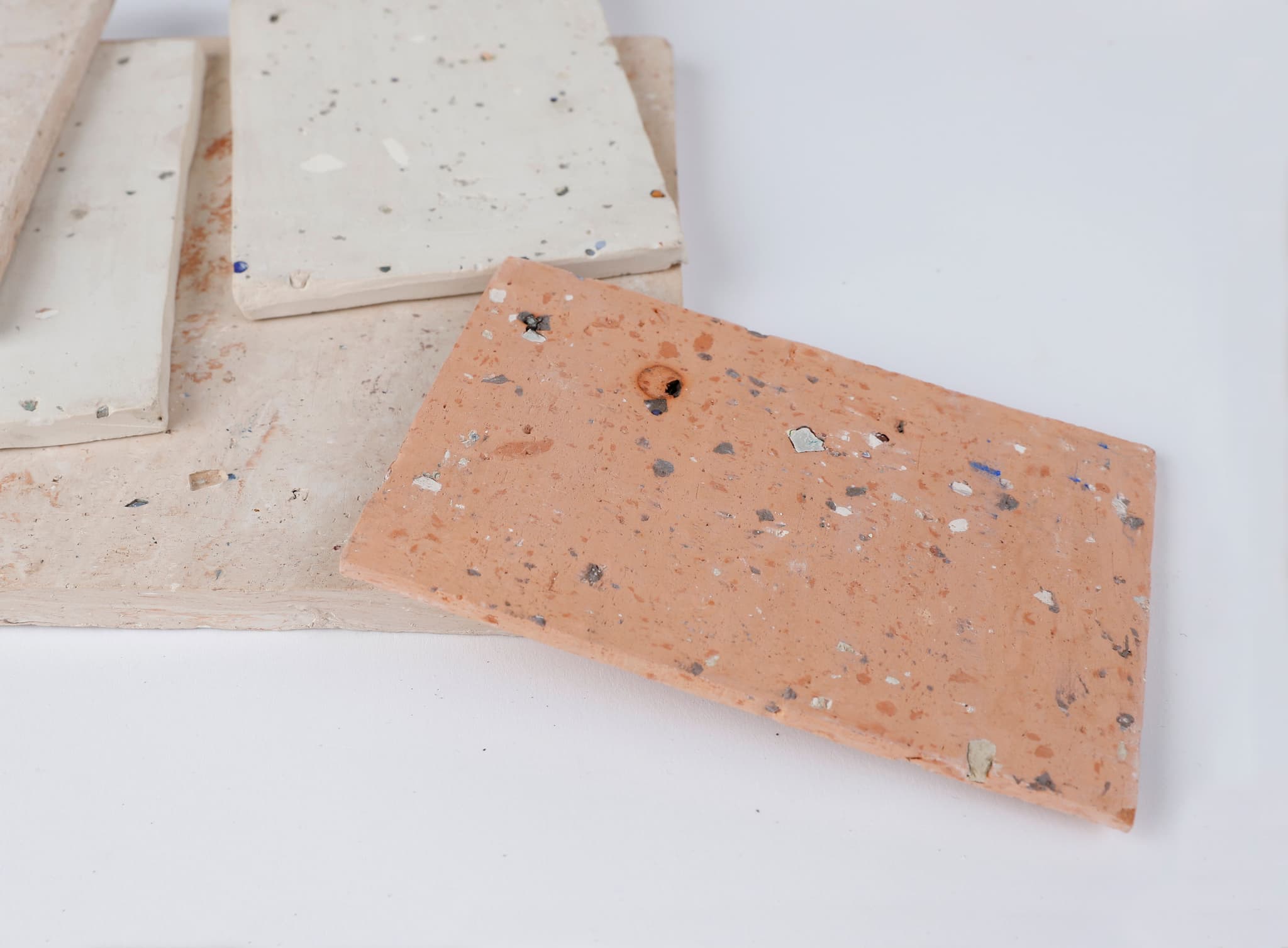
In what ways does your work reflect the principles of vernacular architecture and material research?
In both cases adopting such strategies is more of relying on a set of tools rather than a fit-for-purpose methodological strategy. For sure the material is always the starting point for me and this has fueled my enduring fascination towards material exploration. I never start working towards a bigger idea or something very specific that I want to make. I always find my way through the process. Working with clay has given me this freedom because as a material it has its own rules and limitations.
Ceramics is a discipline rooted in chemistry so it requires a deeper knowledge of more technical aspects from clay preparation to glaze formulation. It requires a method of working which for me is more process-oriented than object-oriented and I feel I respond more enthusiastically to this way of learning and working.
Being material driven the ideas develop through the process. Examining the possibility of using compound elements along with clay is a material-based process that requires a lot of testing and experimentation. I find myself more focused on what these materials can do. To define or describe a material is like telling its story—how it changes when we use it in different ways and I feel this is what I want to express through my work.
I want my work to embody an exploration of material origins and craftsmanship driven by their content and matter. Inspired by the rock formations and the Cycladic architecture of the Aegean archipelago, my pieces are meticulously crafted projecting forms of anonymous art and architecture. Visiting and experiencing this architecture that knows no author, I am intrigued by the idea of the absent architect and the fact that local craftsmen used to build intuitively often with the use of local materials. For sure this is something that has affected my creative process and the revisiting of these forms is obvious in my work.
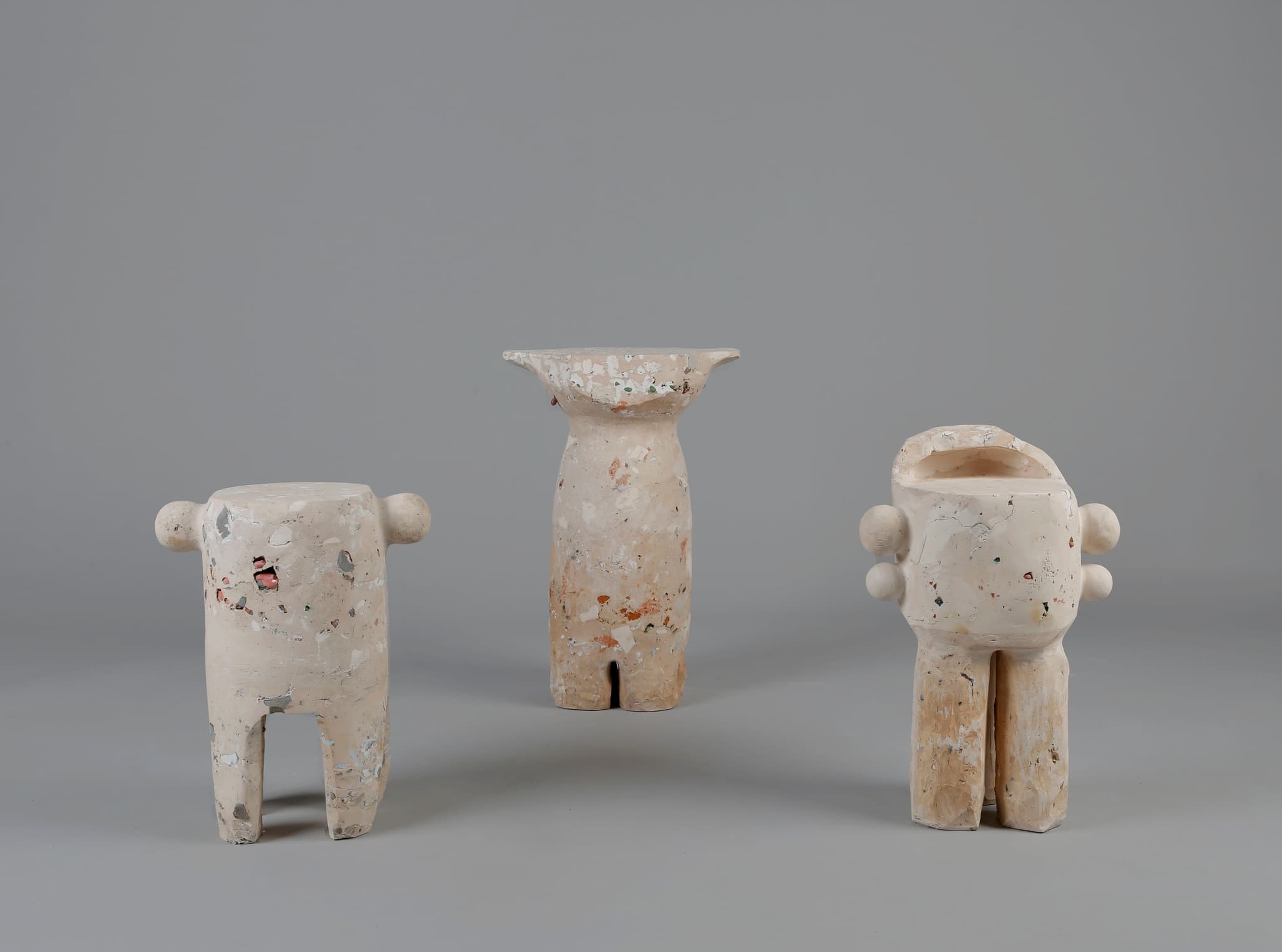
Can you elaborate on the relationship between the inner structure of a clay body and that of a building?
A clay body is composed of a variety of minerals, similar to those used in the construction of bricks and concrete blocks, embodied into a building’s inner structure. For instance, typical clay bodies are built with three main ingredients: clay, feldspar, and silica. Many of these ingredients are also used in the construction of bricks and concrete, such as clay, limestone, sand which is a pure source of silica, and granite which contains feldspar. These types of materials are also used in glaze recipes. Additionally, crushed bricks are used as grog in the clay body.
Therefore, there is a connection between the minerals that constitute the structure of a clay body and the minerals used in the construction of a building. I aim to trace these common minerals and reuse concrete, bricks, tiles, and glass from demolished buildings as substitutes and alternative sources of ceramic supply forming a dialogue with the materiality of a pre-existing structure.

What does the concept of “reverse archaeology” mean to you, and how is it reflected in your work?
As ceramic artists, our daily work with clay connects us deeply to its ancient history. This connection, inspired by archaeology, involves understanding the historical significance of the materials we use. I use the term "reverse archaeology" to describe my approach: I aim to provide a deeper understanding of the history of the materials I use while envisioning alternative applications and futures for clay. By reconsidering craft traditions and making processes, I want to create pieces that serve as tangible artefacts of a circular perspective.

How have your studies in permaculture and natural building impacted your understanding of the relationship between humans and the natural environment?
First of all, when studying in these fields, you are in close contact and have hands-on experience with the earth and the natural environment, gaining an experiential form of knowledge that is very strong. This played an important role in my subsequent connection with clay. You learn how to build with soil, with natural materials, where to source them and the impact they can have on our everyday life and the planet. In permaculture, you study regenerative practices up close and see how matter is transformed through natural processes that have existed for centuries. There is no waste matter; everything can be reused to create something new or to support another system in the garden, food forest, etc.
One of the most important principles is to observe and interact. You observe how nature has its own established circular processes, so when you interact or design a system, you replicate these patterns. Recognising that all matter adapts to other forms of matter helps you appreciate our constant adjustments and interactions with the materials surrounding us. You become aware of how human intervention can often cause problems or disrupt natural processes.
Another key aspect of permaculture design is the ethics of people care and community connection. As we learn to take care of the earth, we also need to take care of people. When designing with permaculture, you use zones to organise the elements in your environment, with the first and foremost being zone 0, which represents the home, the center. You learn to create a harmonious and sustainable living environment, which happens naturally when you "work" the earth with other people.
A circular ethos is cultivated both towards nature and human relationships, and I believe this is the most important knowledge I gained through these experiences. I have developed a great deal of respect for people who devote their lives to these fields, as they are more able to build honest relationships with their close ones and with nature. The impact of their work is not theoretical; it’s immediate and tangible. It’s part of their everyday life and requires a lot of effort and commitment, which is not very common nowadays.
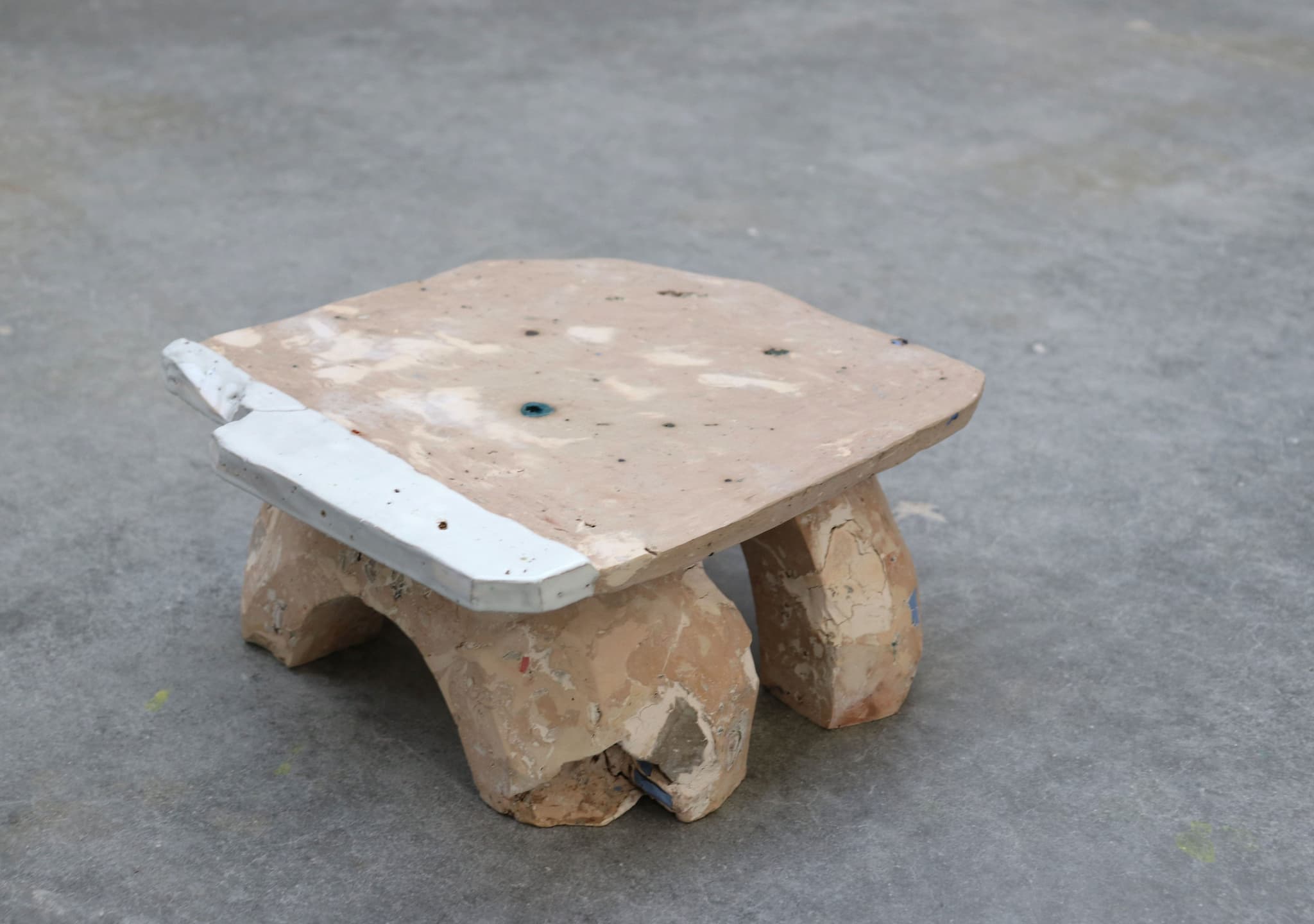
What new directions or techniques are you currently exploring in your work?
In the last few months, I have started working with reclaimed building materials and researching ways to use them as an alternative source of ceramic supply. I want to focus more on technical aspects and explore the possibility of crafting glazes or clay bodies with these materials that can maintain food-safe properties. In one of my experiments, I used porcelain, a fascinating delicate, but strong material that I am beginning to spend more time with.
Additionally, through my next travels, I would like to start tracing rocks or clay deposits that I could use and, in a sense, map them and learn more about their origins.
In between all these, I try to spend time on the pottery wheel to develop my skills and as I tend to do many things at the same time, working on the wheel puts me to the ground.





